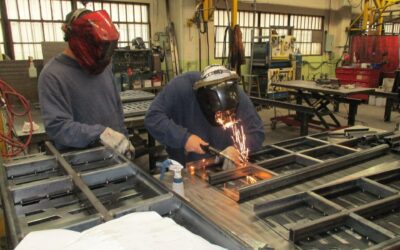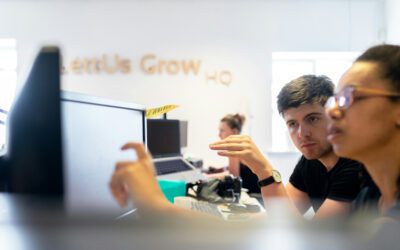 Don your 80s puffer vest, pull out your moon boots and fire up your DeLorean, folks. Today, October 21, 2015 is the date Marty and Doc (of the Back To The Future trilogy) travel to in their DeLorean time machine.
Don your 80s puffer vest, pull out your moon boots and fire up your DeLorean, folks. Today, October 21, 2015 is the date Marty and Doc (of the Back To The Future trilogy) travel to in their DeLorean time machine.
Turns out, they got a lot of things right when they predicted what 2015 would look like in 1985. Most of these innovations are a result of manufacturers with a single-minded focus: making daily tasks simple. From Google’s NEST thermostat to new wearable technologies, the world is shifting. How does that progress happen? What do manufacturers need to do to stay innovative?
Peter Diamandis
I recently heard Peter Diamandis interviewed on life hacker and author Tim Ferris’ podcast. Diamandis is a serial entrepreneur and author with a lot to say about innovation. He may be best known for founding the X Prize Foundation and co-founding Singularity University. Drawing on his personal connections to big innovators like Elon Musk and Bill Gates, Diamandis lists several principles for success in innovation.
How to Innovate (according to Peter Diamandis)
1. Take Moonshots
When studying business giants of today like Jeff Bezos, Richard Branson, Elon Musk and other marketplace disrupters, Diamandis says, “I think they have in common [key attributes] that I believe are absolutely critical for other entrepreneurs to emulate as well. …One of the things is the level of moonshots these people take—their willingness to dream really big and to go ten times bigger than anybody else—not ten percent bigger. That’s really important.”
He goes on to say that when you go ten percent bigger, you’re in competition with the rest of the marketplace. “Everybody’s trying to go 10 percent bigger. When you’re trying to go ten times bigger, you’re there by yourself.” The takeaway: think bigger than the competition
2. Think Differently
Secondly, Diamandis reports that when you take moonshots you have to think differently. Instead of trying to perfect what someone else has already done well, you must “…start with a clean sheet of paper, and approach the problem completely differently.”
His favorite example of this concept: Tesla. “The third thing is when you try to go ten times bigger versus ten percent bigger, it’s typically not 100 times harder, but the reward is a 100 times more.” The takeaway: thinking bigger brings large rewards.
3. Experiment
Diamandis likes to quote Jeff Bezos, Amazon founder, who said, “Our success at Amazon is a function of the number of experiments we can do per year, per month, per week, per day.’ This is certainly a truth for manufacturers. You will try and you will fail, if you are willing to risk experiments. As Diamandis says, “The day before something is truly a breakthrough, it’s a crazy idea. If it wasn’t a crazy idea, it’s not a breakthrough, it’s an incremental improvement. So where inside of your companies are you trying crazy ideas?” Frequently, larger corporations or bureaucratic organizations find it difficult to innovate, steeped in an unwillingness to change.
The takeaway: In the end, YOU, as a small or mid sized manufacturer are poised to be the ideal innovation catalyst. You have already made innovations, just by founding your company and creating your product.
Don’t stop! It’s the people trying out new ideas, the ones who, as Diamandis points out, “…are willing to fail 99 times out of 100—that’s really where the true breakthroughs come from.”
So, what’s your crazy idea?
Listen to the full interview at the Tim Ferris Blog.
If you see anyone dashing around on a hoverboard, let me know!



